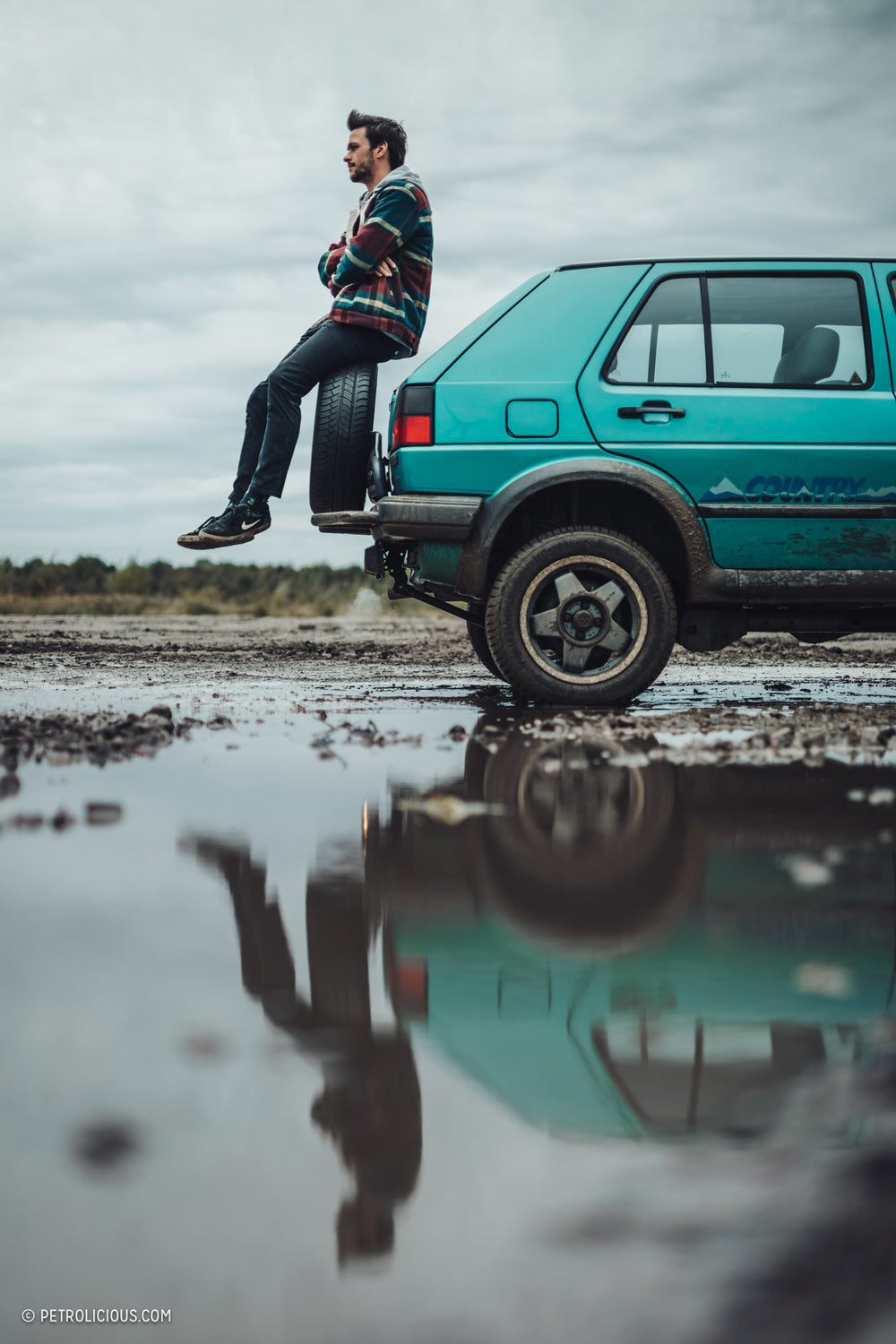The second-generation (Mk2) Volkswagen Golf entered the world in 1983 as a compact car with spacious shoes to fill. Its Giorgetto Giugiaro-designed predecessor had all but invented the hot hatch market with the Golf GTI, its motorsport versions found success in rallying, and the base models followed in the Beetle’s footsteps to become one of the most ubiquitous use-case automobiles in the world. The Mk2 Golf will never receive the first-born’s popularity for starting the party, but it offers today’s enthusiasts a variety of collectible low-volume models, and back in its time as a new car it managed the difficult task of living up to its legacy by selling well and incorporating new, practical engineering solutions into an updated but familiar package.





The most notable new tech was the optional of more drive wheels. The Syncro model introduced four-wheel drive (4WD) to the Golf platform in 1986, and in that same year Volkswagen Motorsport demonstrated the front-wheel drive’s continued potential with a strong showing in the WRC, competing and winning with the GTI in the inaugural season of the Group A category—and as well all know, the Volkswagen automotive umbrella had already proven the remarkable capabilities of 4WD with the Audi Quattro in Group B.
Developed in collaboration with the Austrian manufacturing giant Steyr-Daimler-Puch (a company whose off-road credentials include 6x6 military vehicles and the original G-Wagen), the 4WD version of the Golf would eventually lead to a high-performance rally-inspired model (the aptly and bluntly named Rallye), as well as the other unique variant pictured here, the Country.



Making its first public appearance at the 1989 Geneva Motor Show, the positive reception to the Country helped propel it into production, but only for two model years and to the tune of 7,735 units. There are far rarer cars to be found (or not) out in the world, but given the total production of the Mk2 Golf came in at around 6.3 million units by the end of production in 1992, the Country has become one of the most collectible classic Golfs of any generation.
And in its day it was something of an innovation, offering a combination of sensible city car and off-road capability thanks to the Country-specific modifications to the chassis and suspension. The Country was never intended for formidable rock-climbing routes or fording windshield-depth rivers at speed, but it was perfectly capable on snowy mountain passes, sandy beach roads, and of course for doing hooligan-minded donuts in dirt parking lots or on the lawns of enemies.





To build the Country, Volkswagen turned again to Steyr-Daimler-Puch, where Syncro-equipped Golfs were sent from the Wolfsburg factory to have their Country-specific fittings. There, the Golfs were toughened up for all-terrain with skid plates, subframes, brush guards for the front end, an externally mounted, swing-down spare wheel carrier over the rear hatch, robust plastic fender flares and body moulding all around, as well as a rather dramatically increased ride height with long-travel suspension. The example pictured here shows the model’s launch specification, painted in Montana Green Metallic (the Country’s concept was referred to as the Montana early on), with a sport seats-equipped interior upholstered in Montanakaro cloth, and rolling on the original dark grey Speedline alloys.






The Country wasn’t treated to the higher-performing four-cylinders in the GTI nor the supercharged variant fitted to the Rallye, but the little naturally aspirated 1.8-liter is just powerful enough to make the car capable of merging onto the highway and enjoyable enough to play rally driver on the looser surfaces, as demonstrated by the young owner of this car in the muddy fields we found for this shoot. Plus, this one’s a five-speed manual, which ups the fun above more powerful and more modern automatics.



The 4WD system on the Country is not a permanent one, and whenever it’s cruising down the road normally it’s doing so via the front wheels alone; the viscous coupling and the diffs are set up to send just about half of the torque to the rear wheels when conditions cause wheel slip on the front end. It’s not a full-time 4WD rally car offshoot then, but the Country is an enjoyable thing to toss around off the asphalt, and while everything about it seems firmly rooted in the 1980s—the color scheme and livery especially so—the Country can also be seen as one of the first crossover vehicles, and a genuine example of one at that. But should we celebrate something that helped pave the way for one of the blandest modern automotive segments?



Its modern equivalents are mostly banal, blobby compromises, but the Country did justice to the idea of merging two types of utility under one body, and it does so with the kind of aesthetic that recalls the 1980s aftermarket, but with the fit and finish we expect from OEMs. The Golf wasn’t enlarged and stuck on top of a shared platform, it retained its compactness and defined lines, with its split personality coming by way of visible augmentation—it’s got something of a civilized Mad Max look to it, the kind of car for former accountants to roam the wastelands in.
Today, the Country is the type of car that fits in perfectly with the Radwood crowd, but it’s historical significance is more interesting than its period-perfect appearance. This was a pretty avant garde car, and although it wasn’t produced in huge quantities, it expanded the reach of one of the most democratic cars ever built and the out of the box thinking that created this thing helped change the perception of what a compact car could be. Sure we’re being a little sentimental and dramatic, but this was a truly unique creation. It’s better appointed than a Fiat Panda 4x4 and less of a commitment than a Land Rover. It sits in between (though certainly closer to the Panda), filling a space that didn’t exist before, and representing to this day one of the better executed mash-ups on four wheels.


























































